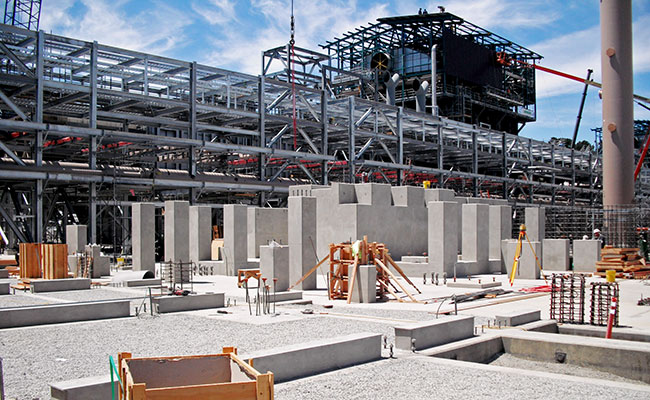Data and metrics drive knowledge and help influence many decisions. Managers will have a tough time making decisions without verifiable facts, so finding the right metrics to measure will help immensely in understanding efficiency within projects. Metrics can help you tell at a glance how your project is progressing, or potentially tell a company they are considering the wrong metrics.
This article intends to explain a few common metrics, tell you how to develop your own, and how to use your collected data to best make your projects efficient and profitable.
A Few Useful Metrics
Productivity
In the construction world, many metrics can be measured in dollars, starting with productivity. Your definition may vary, but productivity is usually measured by the amount of time and money spent against the budgeted or predicted amount. Less productive workers are more expensive with clients typically expecting a fixed cost.
For example, most project managers can tell their software how much time and material they think a project like installing a door will take. Knowing the amount of time and material used via software, the project manager can tell how effective a worker has been, providing coaching or recognition opportunities.
Software like the kind available from Bridgit Solutions tells you how to best allocate your resources to ensure your employees can stay productive.
Scope of Work
Were the details of a project well established to the project manager and workers. Did anything change? Changes to the scope of work are critical as changes to the amount of work done will change the budget and time. This metric and knowledge are necessary to evaluate the effectiveness of a project when the project itself changes.
Bridgit Solutions software helps make the scope of work and changes more predictable to ensure proper allocation of resources and better productivity.
Quality and Satisfaction
Delivering quality work is essential for keeping clients happy and is measured both in project manager’s observations and the client’s demands. Observe, catch, and record problems early and you will be able to correct the course of a project before it’s too late.
Quality and satisfaction also provide great coaching opportunities for workers and construction managers. Noticing that tiles aren’t placed properly tells the project manager that the worker could use help with that skill, or that something else is off related to the project. Did the contractor have enough time? Was the floor suitable for tile?
Use this metric to ensure you give employees the right tasks that better suit their skill set and time.
Cost
Businesses are measured in part by profit, and the cost is a huge factor. Cost needs to be closely monitored in relation to the provided budget and projected expenses so that other metrics, like scope of work or time, can change to ensure costs are where they need to be.
Cost is readily reflected in man power, materials, and quality. You need the right number of skilled people doing the right work to have effective costs, and the right amount of materials to avoid delays that will also cost money.
Gross Margin
The goal of a project is to add profits to the company’s bottom line. Gross margin is literally measured as the difference between cost and total income. Gross margin needs frequent measurement and is tied directly to cost, and needs to be planned out before the project starts to ensure proper measuring for the metric.
Given a construction business’s need for cash flow, project managers who can meet quality demands and protect gross margin are invaluable. Combine other metrics with gross margin and you will find yourself in the industry for a long time.
Implementing Metrics
You’ve chosen which metrics you want to implement, now it’s time to train your employees how to measure them. Give clear examples of how they are being measured and make sure your expectations are met. Indicate that a new screen or dashboard is meant to measure what percent of their time was used properly according to your software.
Simply making your metrics and objectives clear can be very helpful in establishing trust and accountability. Don’t spring metrics on people without telling them they are being measured.
Make sure the data is credible. It is possible for workers to manipulate data or enter information incorrectly. Ensure you don’t reward those who change data. Also, have senior managers on board to enforce issues so that everyone is on the same page.
Finally, ensure you have the resources needed to implement metrics. If measuring employees, and productivity, you can’t set attainable goals with a lack of people. A cash strapped business will also have a harder time having enough materials to keep up with productivity metrics.
Develop your own
Now take a look at your own business and see which areas you want to measure and improve. Is productivity an issue? Start with that. Has profitability been a major drag recently? Consider looking at cost and gross margin. Keeping in mind that many of these metrics are tied together, improving one area can have a positive ripple effect.
After implementing a goal or metric, your goal should eventually be to establish goals during the planning process and have a dashboard readily available to see and understand results at a glance. From there, you can better fine tune processes that help your particular business once your workers are coached on the importance of metrics.
Conclusion
Metrics are critical to understanding how your business is functioning from the ground up. Consider what insights you wish to gain first then make a plan to implement. Once your employees are on board and providing the information you wish to know, you can start making small changes to better serve your employees and bottom line.
We hope your construction business finds this article useful for the purpose of understanding what metrics are and how you can implement them within your business.
Check HomeInside for more articles.
